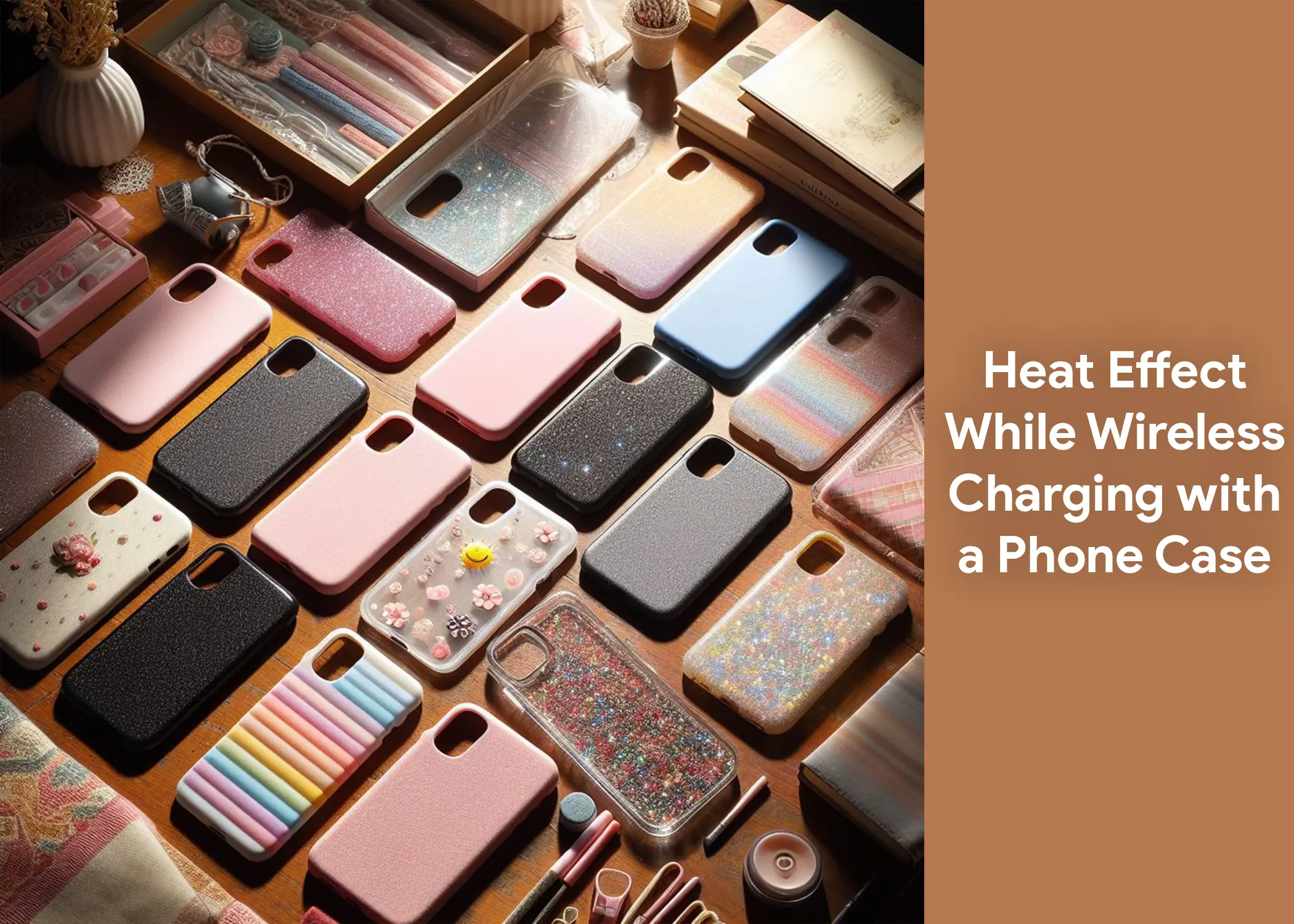Heat Effect of Wireless Charging with Phone Cases

The convenience of wireless charging is undeniable. Just plop your phone down on the pad and watch the battery percentage climb. But what happens when you introduce a phone case into the equation, especially one made of heat-trapping materials like silicone? Let’s dive into the world of wireless charging with cases and explore the potential impact on your phone’s temperature.
For example, lets take Silicone cases. While offering excellent protection, are notorious for their insulating properties. This means they can trap the heat generated during wireless charging inside the phone, potentially causing the internal temperature to rise. This isn’t necessarily a safety concern, as phones have built-in thermal throttling mechanisms, but it can affect performance and battery life.
In this article we go into the world of wireless charging with cases, exploring the impact on your phone’s internal temperature/heat. We’ll unpack the role of case thickness, charger efficiency, and phone model in the heat equation, and offer handy tips to keep things cool during wireless charging.
We’ll also rank popular phone case materials by their heat retention tendencies, from aluminum’s icy embrace to the insulating warmth of fabric and leather. By the end, you’ll be equipped to choose the perfect case-charger combo for a worry-free wireless experience.
The Heat Factor
Several factors influence the temperature rise during wireless charging with a case:
- Case thickness: Thicker cases generally trap more heat. Aim for thinner silicone cases (ideally, under 3mm) to minimize the effect.
- Charger efficiency: Higher-wattage chargers generate more heat. Choose a charger with the appropriate wattage for your phone to avoid excessive heat production.
- Phone model: Some phone models are more prone to overheating than others. Check online reviews or forums for specific information about your device.
Tips for Less Heat While Wireless Charging with a Phone Case
Here are some tips to mitigate the heat buildup when wirelessly charging your phone with a silicone case:
- Remove the case before charging: This is the most effective way to ensure optimal cooling, but it defeats the purpose of the case’s protection.
- Invest in a wireless charging stand with built-in fans: These actively blow air on the phone, helping to dissipate heat.
- Choose a ventilated case: Look for silicone cases with built-in air channels or ventilation holes to facilitate heat release.
- Avoid Direct Sunlight: Don’t wirelessly charge your phone in direct sunlight, as this can further exacerbate the heat issue.
- Monitor your phone’s temperature: Some apps can monitor your phone’s internal temperature. If it gets uncomfortably hot, stop charging and let it cool down.
Phone Case Materials Ranked by Heat Retention When Wireless Charging (Descending Order)
Wireless charging generates heat, and cases can make it worse.
- Aluminum: A champion of heat dissipation, aluminum cases keep your phone cool during charging. However, they can be slippery and prone to scratches.
- Carbon Fiber: Lightweight and heat-conductive, carbon fiber offers a good balance between coolness and protection.
- TPU and PC Blends: These blends combine the flexibility of TPU with the rigidity of PC, offering decent heat dissipation while providing good shock absorption.
- Tempered Glass: Surprisingly, tempered glass does a decent job of conducting heat, thanks to its smooth surface. However, it offers limited protection against drops.
- TPU (Thermoplastic Polyurethane): While not the best at transferring heat, TPU’s flexibility helps absorb and distribute it within the case, preventing your phone from getting too hot.
- Plastic: The heat retention of plastic cases varies depending on the type. Avoid rigid plastics like polycarbonate and opt for softer varieties like TPU blends for better heat management.
- Wood: Wood is an insulator, meaning it traps heat. While it won’t make your phone scorching, it won’t actively cool it down either.
- Leather: Similar to wood, leather is an insulator that retains heat. Its thickness and lack of breathability further contribute to this effect.
- Fabric/Textile: Fabrics are excellent insulators, trapping both heat and moisture. This makes them a poor choice for hot weather but can be cozy in colder environments.
- Rubber/Silicone: While offering good shock absorption, rubber and silicone are also effective heat insulators. Their non-breathable nature traps heat inside the case, potentially making your phone warm.
In conclusion, most wireless chargers work through thin cases made of materials like plastic, rubber, and TPU. However, thicker or metal cases may interfere with the wireless charging process, as they can block or absorb the charging signals. If you’re looking to use wireless charging with a phone case, it’s essential to consider the case’s thickness and material. Slim and non-metallic cases are generally more wireless charging-friendly, ensuring optimal charging efficiency.
Related:
- All OnePlus Phones at the MKBHD Smartphone Awards (2024)
- The Best Phones of 2023: The MKBHD Smartphone Awards
- iPhone 15 Pro’s Action Button – Customizable Shortcuts
